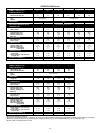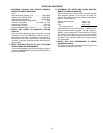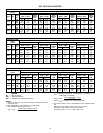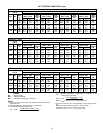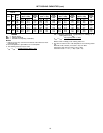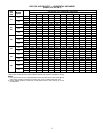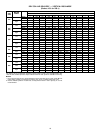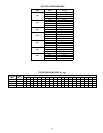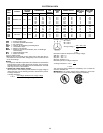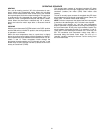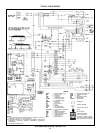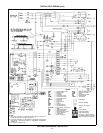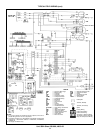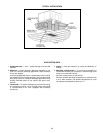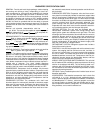OPERATING SEQUENCE
HEATING
On a call for heating, terminal ‘‘W’’ of the thermostat is ener-
gized, starting the induced-draft motor. When the hall-effect
sensor on the induced-draft motor senses that it has reached
the required speed, the burner sequence begins. This sequence
is performed by the integrated gas control board (IGC). The
indoor-fan motor is energized 45 seconds after flame is estab-
lished. When the thermostat is satisfied and ‘‘W’’ is deener-
gized, the indoor-fan motor stops after a 45-second time-off
delay.
COOLING
With the room thermostat SYSTEM switch in the COOL position
and the FAN switch in the AUTO. position, the cooling sequence
of operation is as follows:
When the room temperature rises to a point that is slightly
above the cooling control setting of the thermostat, the thermo-
stat completes the circuit between thermostat terminal R to ter-
minals Y and G. These completed circuits through the
thermostat connect contactor coil (C) (through unit wire Y) and
blower relay coil (BR) (through unit wire G) across the 24-v sec-
ondary of transformer (TRAN).
The normally-open contacts of energized contactor (C) close
and complete the circuit through compressor motor (COMP) to
condenser (outdoor) fan motor (OFM). Both motors start
instantly.
The set of normally-open contacts of energized relay BR close
and complete the circuit through evaporator blower (indoor) fan
motor (IFM). The blower motor starts instantly.
NOTE: Once the compressor has started and then has stopped,
it should not be started again until 5 minutes have elapsed.
The cooling cycle remains ‘‘on’’ until the room temperature
drops to point that is slightly below the cooling control setting of
the room thermostat. At this point, the thermostat ‘‘breaks’’ the
circuit between thermostat terminal R to terminals Y and G.
These open circuits deenergize contactor coil C and relay coil
BR. The condenser and compressor motors stop. After a
30-second delay, the blower motor stops. The unit is in a
‘‘standby’’ condition, waiting for the next ‘‘call for cooling’’ from
the room thermostat.
21



